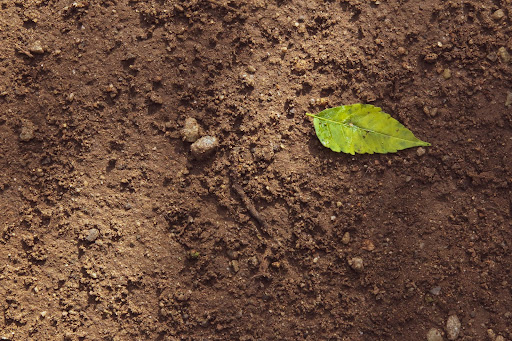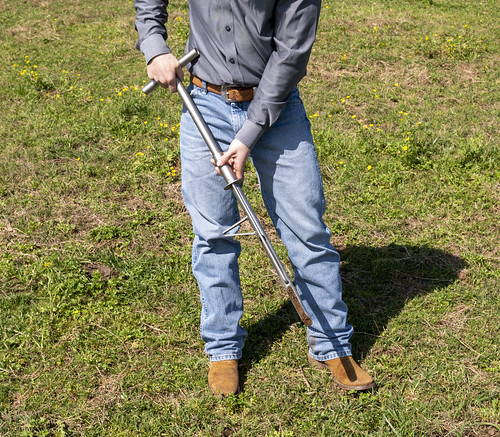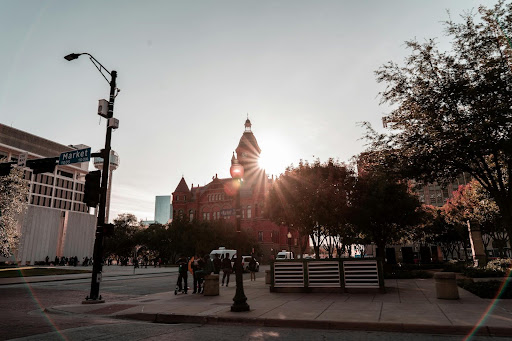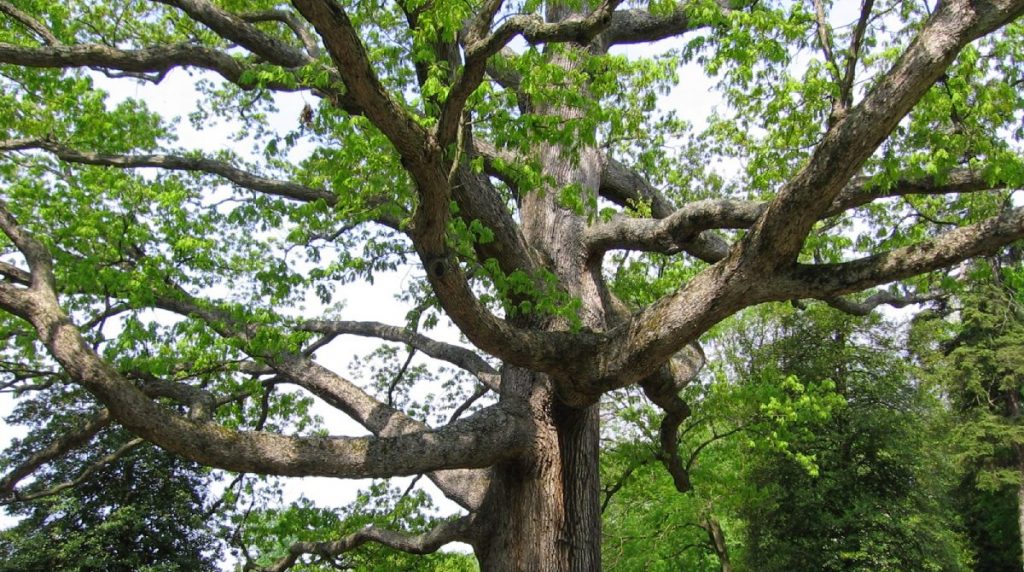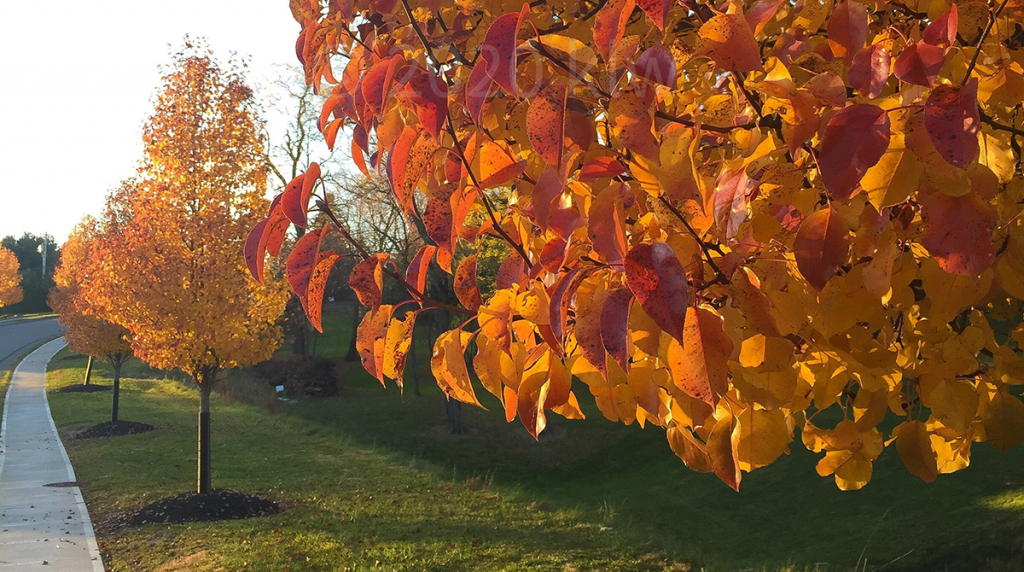
Date November 23, 2020
Category
Nurturing tree growth is essential if you want to create a beautiful landscape on your property. What do we mean by this? Well, if your trees aren’t looked after or nurtured correctly, their growth will be stunted. You’ll start to notice various signs that the tree is dying or starting to diminish. As a result, the entire landscape gets disrupted because a few of your trees aren’t standing as proud as the rest.
In today’s post, we’ll walk you through some essential tips to look after your trees. All of these tips are geared towards improving tree growth and ensuring yours grow nice and healthy in your garden. If you’re a property manager or own commercial property, you can also use these tips to your advantage. They’ll help you create a gorgeous landscape that makes your properties more attractive. From a business owner’s standpoint, creating the right image is key when drawing in new customers.
On that note, let’s dive into the tips:
Pick The Right Location For Your Trees
It all begins with the location of your trees. Before you plant anything, always be aware of your surroundings. If you speak to any arborist or tree care professional, they’ll tell you that a common problem relates to overcrowding. People will plant trees too close to one another, and they end up bunching up. This creates an ugly landscape, but it also restricts the trees as they grow into one another.
On the other hand, you get instances where people plant trees too far apart. This tends to happen when you leave too much space, and your trees don’t grow as tall as expected. That’s a good place to start; understand which trees to plant where. It sounds complicated, but there’s an easy way to approach this. Big trees need a lot of space; small ones can fit in smaller places.
How do you know if a tree will be big or not? There are great resources online, such as the Arbor Day Foundation website, to help guide you to the size and spacing needed for your preferred tree. This will help you figure out which trees are suitable for your property based on how much space is available.
Warning: Be Wary Of Obstacles
To add to the point about choosing tree location, be extra cautious of any surrounding obstacles. This can include any of the following:
- Overhead power lines
- Walls
- Neighboring properties
- Large rocks/stones under the earth
These things can all hamper tree growth and cause potential safety hazards. Ideally, the best place to plant a tree is in a space where there are no obstacles or hazards nearby.
Select The Right Trees For Your Hardiness Zone
The hardiness zone is a geographical zone where some plants grow best in that specific climate. In essence, it refers to different areas of the country. The USDA Hardiness Zone Map splits the US and Canada into 13 different zones. There’s a great article by CNET that shows this map and also explains it in more detail.
To summarize, you need to pick the right plants depending on your hardiness zone. Effectively, you’re picking trees that suit the climate in your area. The best example would be if you lived in a cold part of the country. Here, you wouldn’t pick any trees that thrive in hot and sunny climates. Instead, you need one that survives colder temperatures and can live through harsh winters.
It sounds challenging, but it’s actually very straightforward. Find your hardiness zone, then do some more research to select the best trees for your climate. This will work wonders for the overall tree health and growth.
Create a Diverse Landscape
As tree care experts, we’ve seen some common problems in landscape design. Obviously, we don’t provide landscaping design services or anything like that – our concern falls firmly on the trees. For example, when you select and plant the same species of a tree across your landscape, you’re asking for problems.
Why? What’s the issue with this?
Primarily, you run the risk of ruining the entire landscape if the species becomes infected. All of a sudden, you have an entire landscape of dead and decaying trees. If you switch things up and plant different variants, the risks are reduced. From a purely aesthetic perspective, the different tree heights and styles can also make your landscape look more attractive.
Don’t Create a Planting Bed Around The Tree
Arguably the most common mistake is to create a planting bed around the tree. For those that don’t know, this is where you basically make a slightly raised border around your tree. This happens when you’re planting it, and the idea is to create a nice little raised bed of soil above the natural level.
The problem is that this is terrible for tree growth. When you have a raised bed, you’re adding too much soil to the base of the tree. This means the bark at the bottom of the tree comes into contact with too much soil, making it rot. Consequently, a rotting tree is more prone to infection and will likely die out before it reaches full maturity.
Moreover, the excess soil is a breeding ground for insects. They can get inside the tree and cause all sorts of damage, ruining your landscape. We’ll talk more about insect infestation at a later point in this guide, including how to prevent it. For now, all you need to focus on is not creating a planting bed. Don’t raise the soil level any higher than it already is.
Adding Mulch Is Essential For Tree Growth
It’s easy to fall into the trap of neglecting your trees when they’re planted. A lot of individuals assume that trees just grow by themselves. We think this notion comes from the fact that most of us are used to seeing fully-matured trees that stay around for years. If you see trees in a forest or in a park, who cares for them? Don’t feel ashamed if you assumed your trees don’t need any extra care; it’s a common mistake!
If you want to create a beautiful landscape, you have to set your trees up for long and healthy life. How do trees grow? Mainly, the roots dig deep into the earth and soak up various nutrients from moisture. This is where mulch comes in very handy.
Mulch is a collection of different materials that are usually laid around plants. In this case, you’re placing it around the bottom of your tree, covering the soil. We highly recommend using organic mulch as it is a lot better for your trees and the environment. Essentially, the mulch traps moisture in the soil, letting the tree’s roots absorb more water and nutrients. You don’t need to put much down – two inches is perfectly fine. In doing so, you can make tree maintenance a lot easier by not needing to water your tree every single day.
Pro Tip: Create Your Own Mulch
You can buy mulch from different websites or gardening stores, but there’s really no need – especially in fall/winter. Collect up all the loose and fallen leaves around your property and use them as mulch. Make sure you dry them out before scattering them, and you’ve just saved money and cleared your property of fallen leaves!
Don’t Forget To Water Your Trees
We mentioned watering your trees in the previous point, but it’s worth pointing out that mulch doesn’t prevent the need for this. It will reduce the frequency, but most trees should be watered once per week during neutral weather conditions. If it rains during the week, you can get away with not watering the tree. On the contrary, if the temperature is super hot, you may have to water the tree twice or three times a week.
It all depends on the weather conditions, but winter watering is generally less frequent than summer watering. A lot of people struggle when it comes to watering trees and plants. Largely, you might not know how much water to use. The best way to look at it is to keep the soil moist. It should be visibly wet after watering but not water-logged.
Proper Tree Pruning Is Essential
Pruning is definitely the most common and vital tree maintenance technique. You’ll see us refer to this as tree trimming throughout this section, but please know that both terms mean the same thing. Trimming or pruning a tree is essential to maintain a glorious landscape. As your tree grows, its branches can get a bit out of control and wild. They may grow close to obstacles or buildings, and they can generally just look unsightly.
From a general standpoint, trimming or pruning a tree is simple. Anyone can pick up some tools and trim a tree or cut some limbs off. In fact, some of you have probably done this before or seen someone in your neighborhood do it. While tree pruning is important, we don’t recommend doing it yourself. Instead, you’re far better off hiring a professional to take care of things for you.
Why?
By hiring a professional tree pruning service, you benefit from the expert knowledge of trees and tree health. Unless you’re a professional tree trimmer, you won’t know what to cut and what to leave. Many people will trim branches and cut things off that didn’t need to be removed. This compromises the tree’s health and can shorten its life.
A professional tree trimmer will tell you when it is a good idea to prune a tree. At TreeNewal, we recommend the following instances:
- If branches are dead or decaying
- If the tree is leaning over to one side due to excess weight from branches
- If the tree is growing dangerously and could present safety concerns
- To improve light and air penetration
In any of these scenarios, proper tree pruning will be extremely helpful. We actually offer a service that is perfect for tree growth as our professional arborists will trim and prune your trees. As a result, you will end up with a fantastic tree landscape that looks beautiful and well-maintained.
Keep Your Trees Fertilized
If you want to maintain a beautiful tree landscape, you need healthy trees. All of the previous tips will help with this, but we’ve missed out on an important factor; tree nutrition. Trees are living creatures, meaning they need food to survive. They get this from the nutrients in the soil, but many trees can be malnourished.
Here, you should work with an ISA Certified Arborist to improve tree nutrition. You must keep it fertilized to ensure it receives all the necessary nutrients to grow big and strong. This will prevent instances where your landscape is ruined by malnourished trees that are either too small or dead.
Try To Prevent Insect Infestations
Insects are a functional part of our ecosystem, but they can ruin a landscape. With that in mind, it’s a smart idea to put some preventative measures in place to stop any infestations around your trees and plants. In the end, prevention is far more cost-effective, way more efficient, and much better for the environment.
Thankfully, insect management and prevention is definitely achievable. You can get great results by following some of the basic tree care tips listed previously. Adding mulch is a great way to keep the tree healthy and prevent decay and disease. Some insects are drawn to dying trees, so proper tree care is a great preventative. Additionally, keeping the soil area nice and tidy will stop many insects from making an appearance.
Contact TreeNewal To Improve Your Tree Landscape
We highly recommend following all of the advice in this guide to improve tree growth and improve your landscape. To go one step further, you can work with a professional tree pruning service. At TreeNewal, we specialize in tree pruning and removal, along with many other tree care services to ensure your tree is getting holistic care. By consulting with our ISA Certified Arborists, you can be confident you are getting the right skills and expertise to find the best solutions for your trees.
Feel free to contact us today to inquire about tree pruning and removal or any of our other services.
Your neighbors at TreeNewal are here to help you. To reach our ISA Certified Arborists for professional tree maintenance and tree services, or even if you just have some questions, give us a call today at tel:(817) 592-6846
To learn more about How To Nurture Tree Growth To Make An Ideal Landscape, call our Argyle and Southlake based teams
at tel:(817) 592-6846 or send us a message.
We’re a little different than the average tree services company.
Learn more about TreeNewal’s ISA Certified Arborists!
Our Dallas/Fort Worth-based tree doctors can explain how sustainable tree care services add more value to your bottom line.
Healthy trees, healthy lives.
